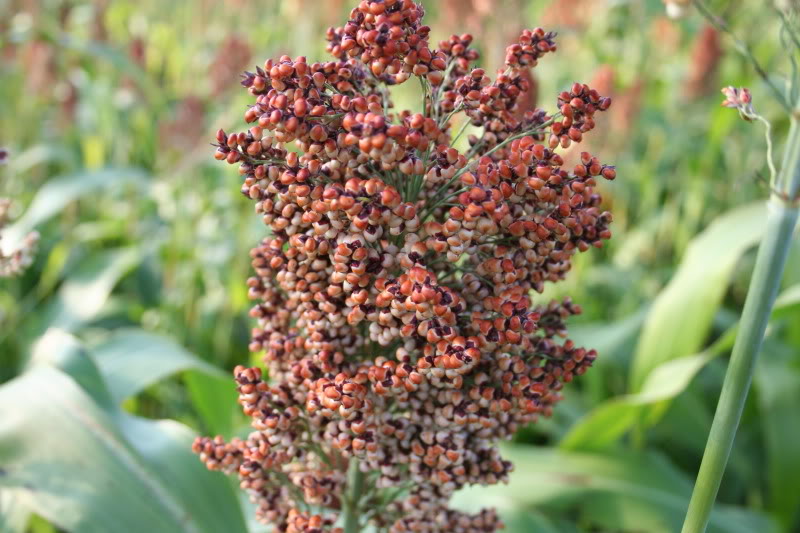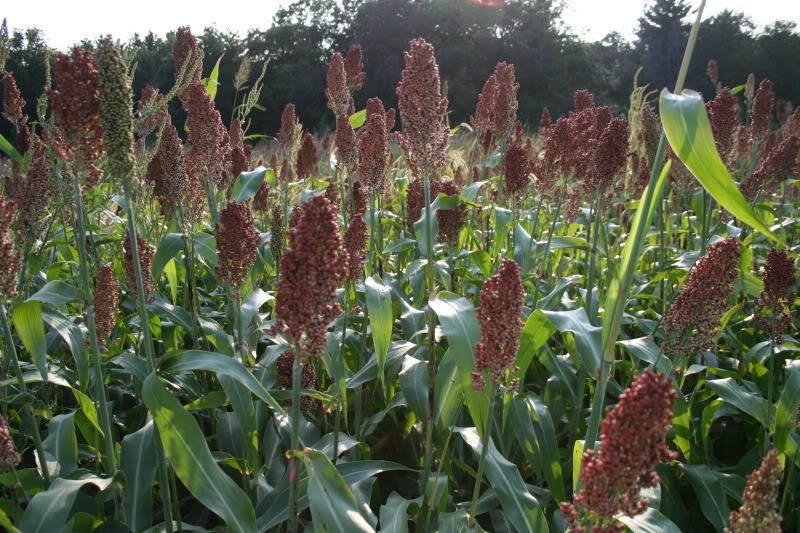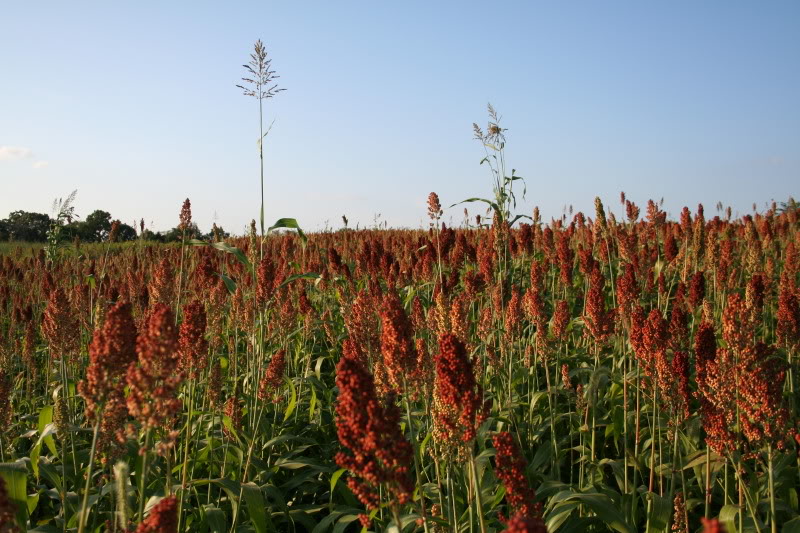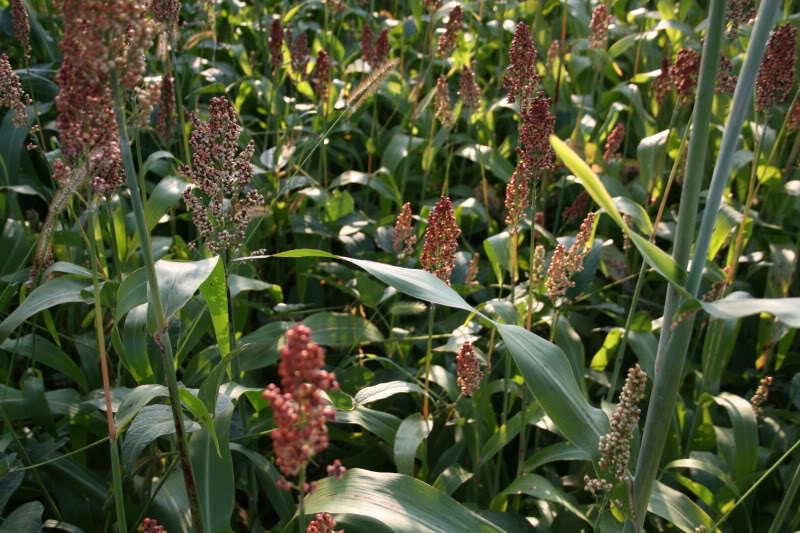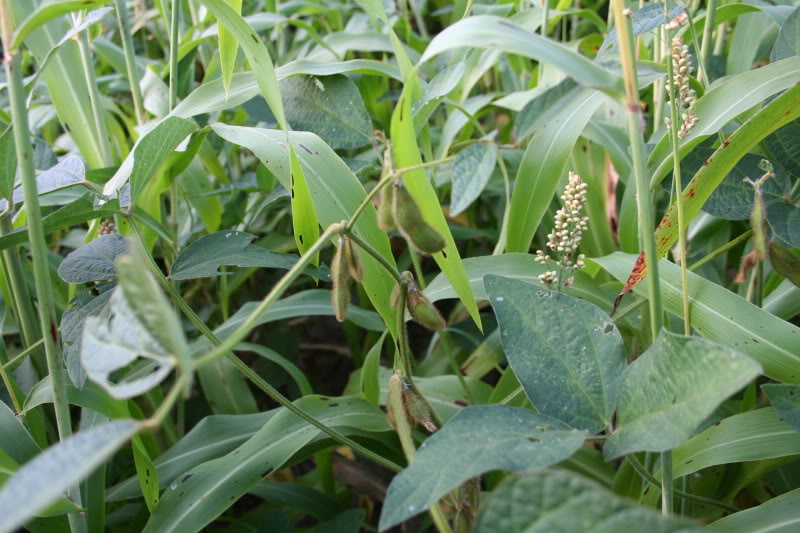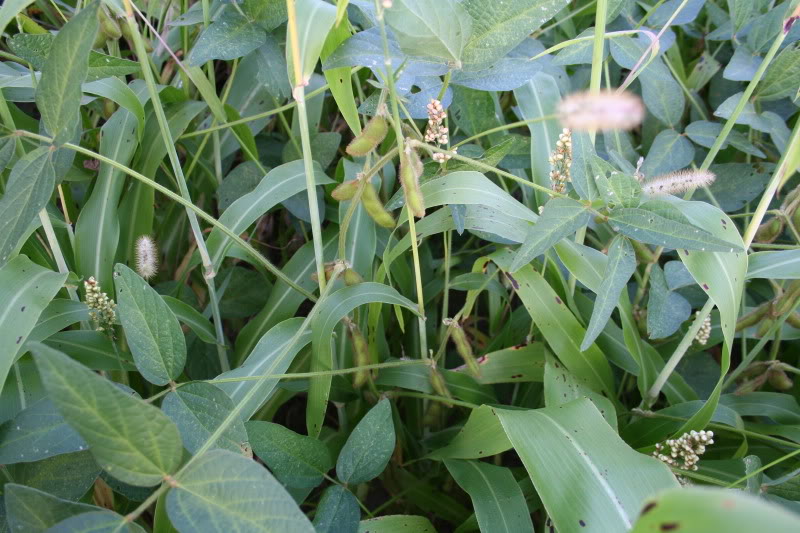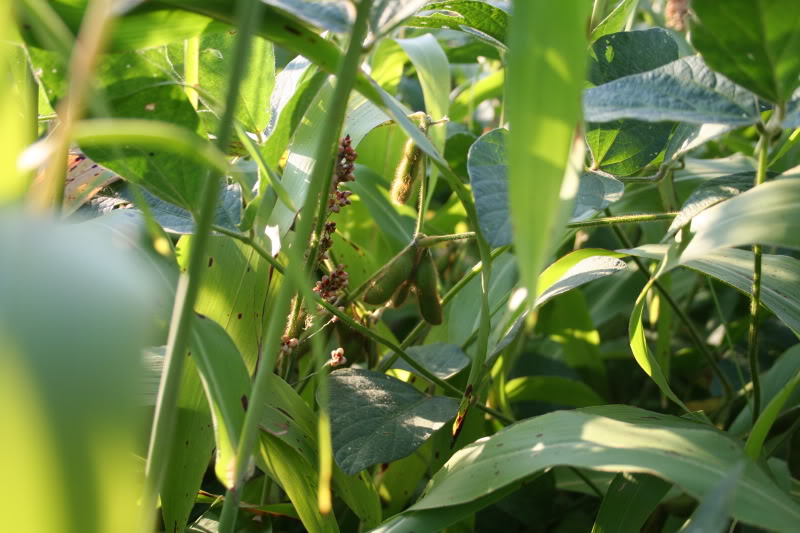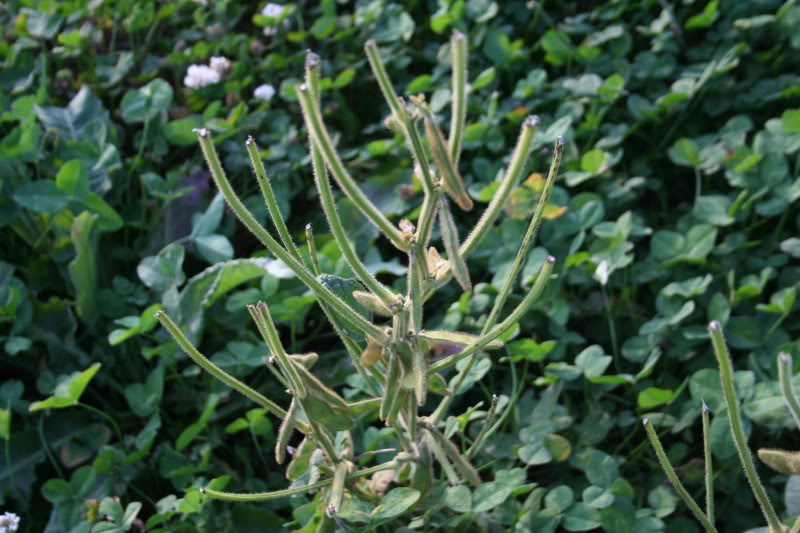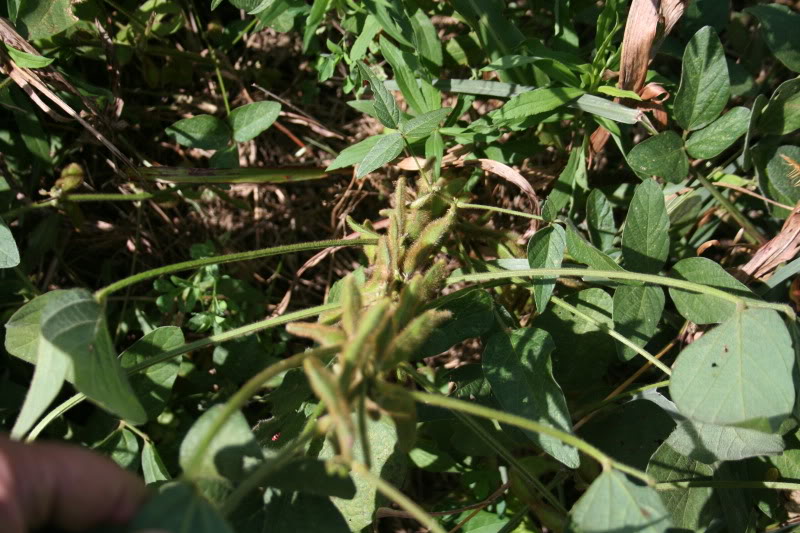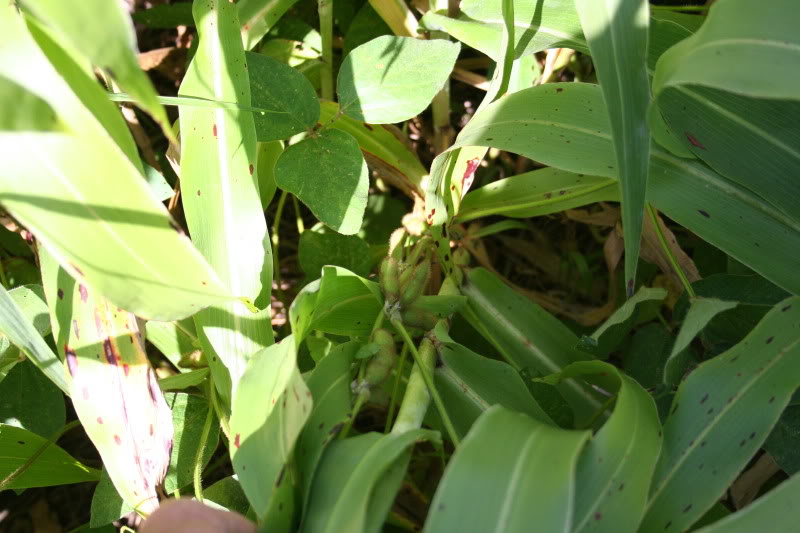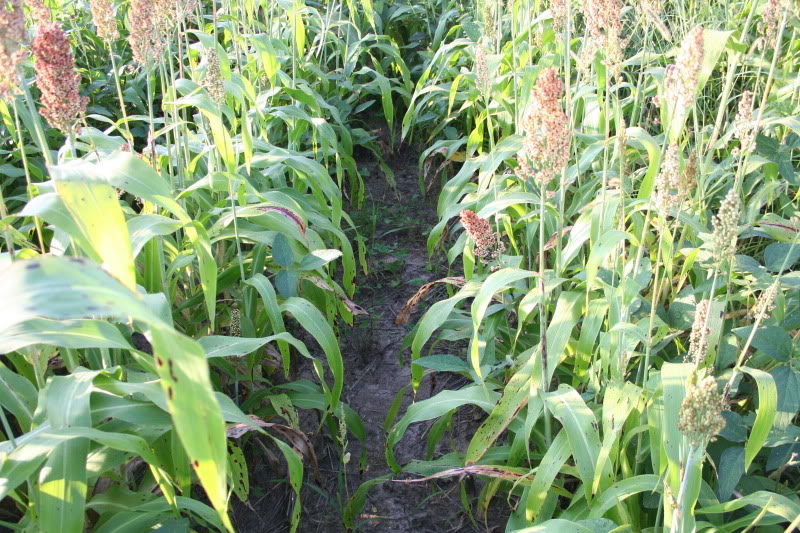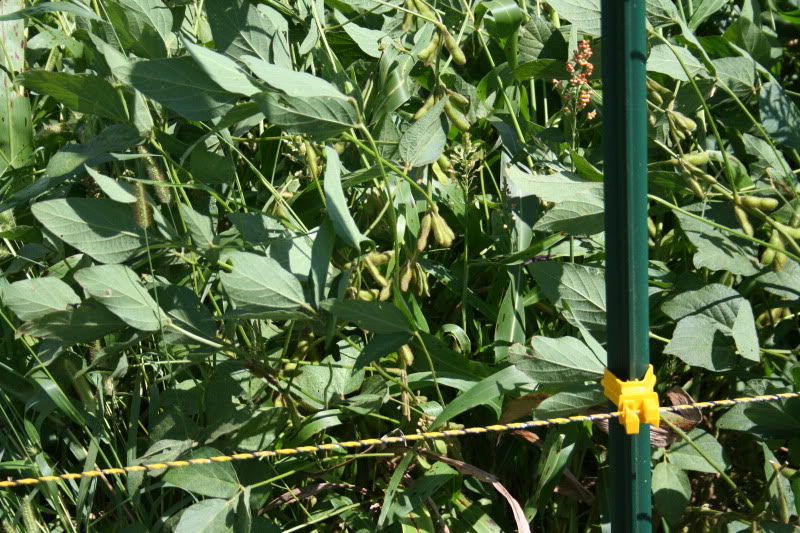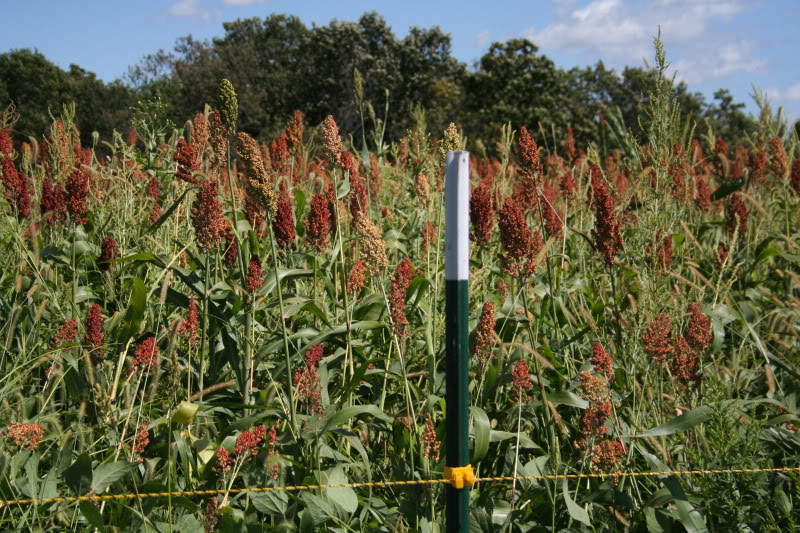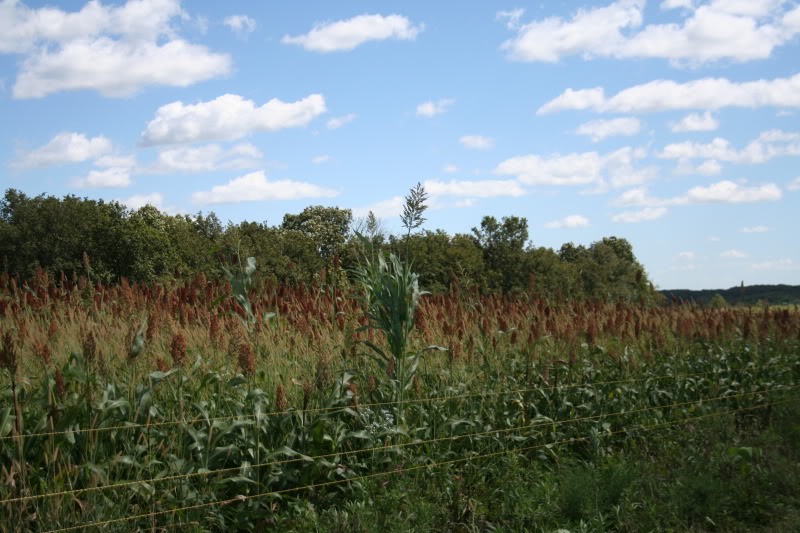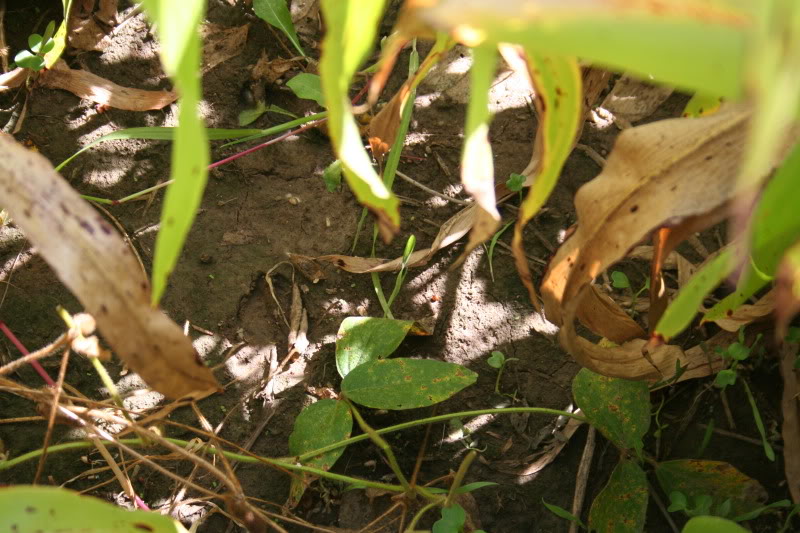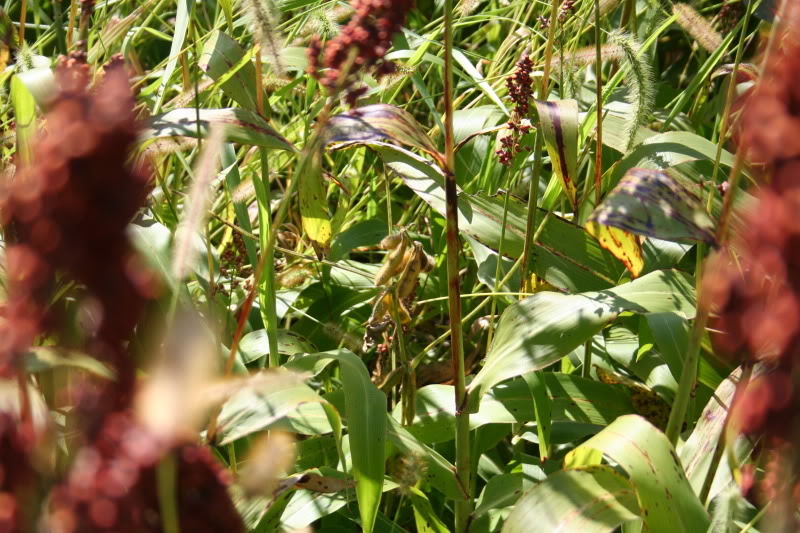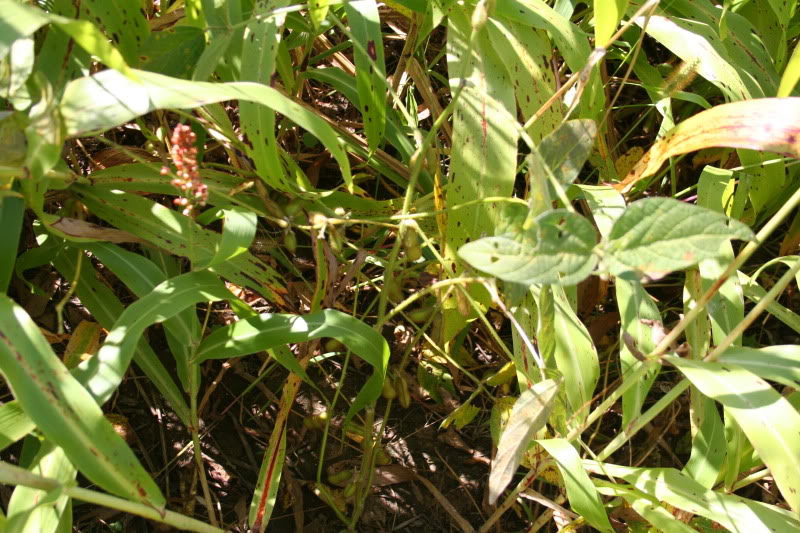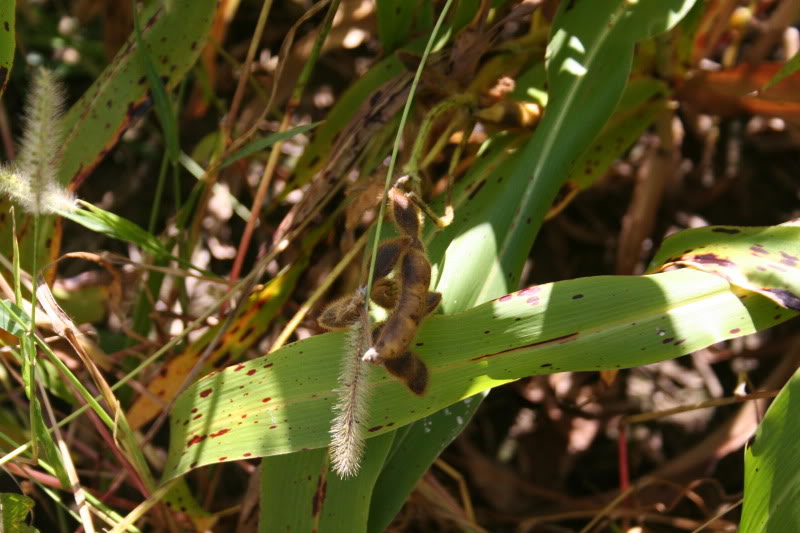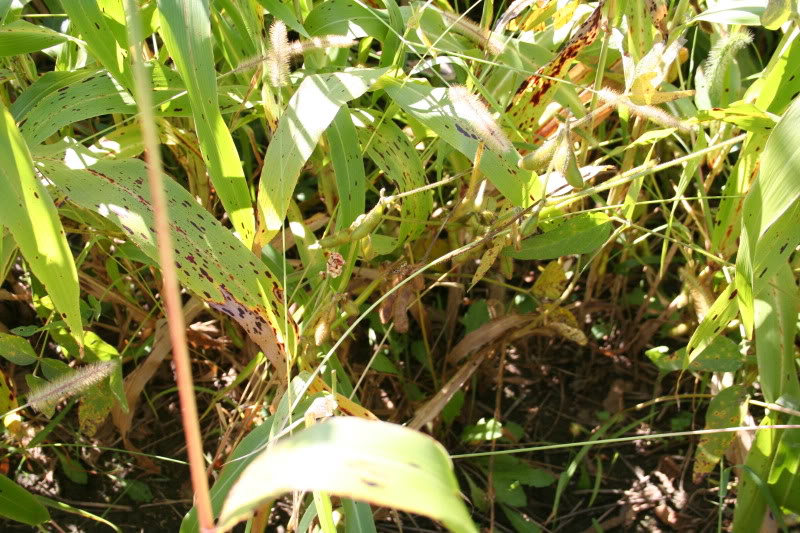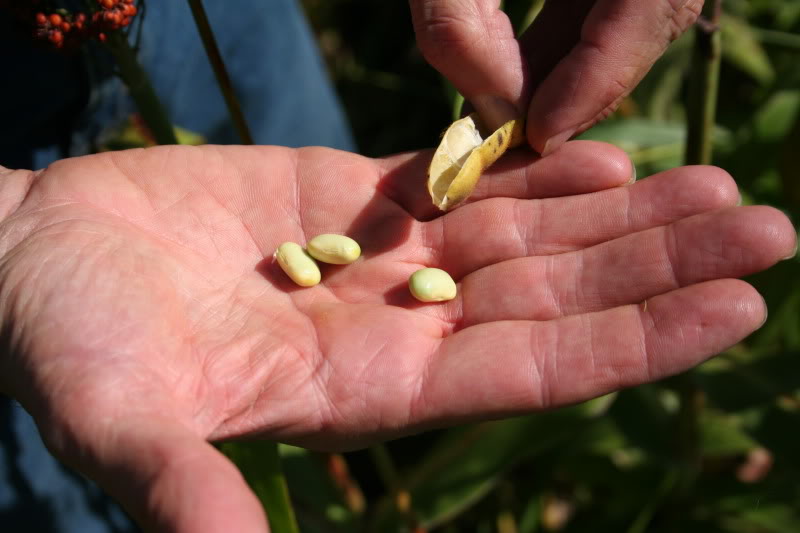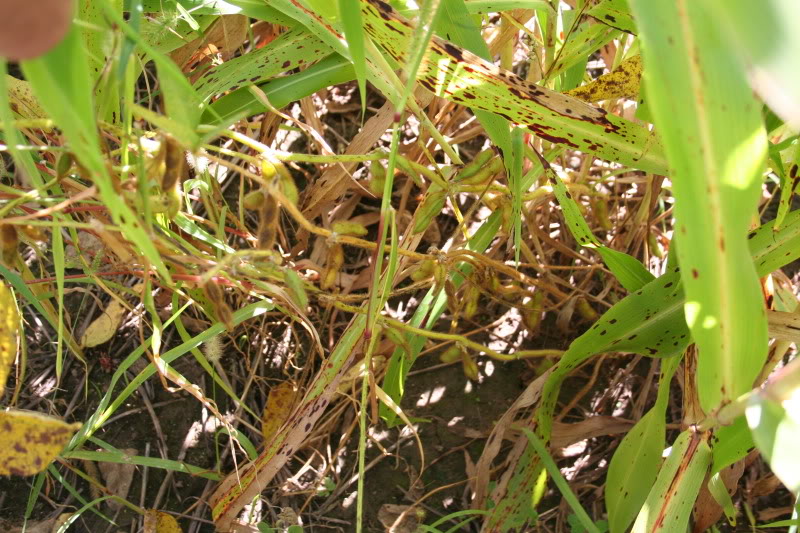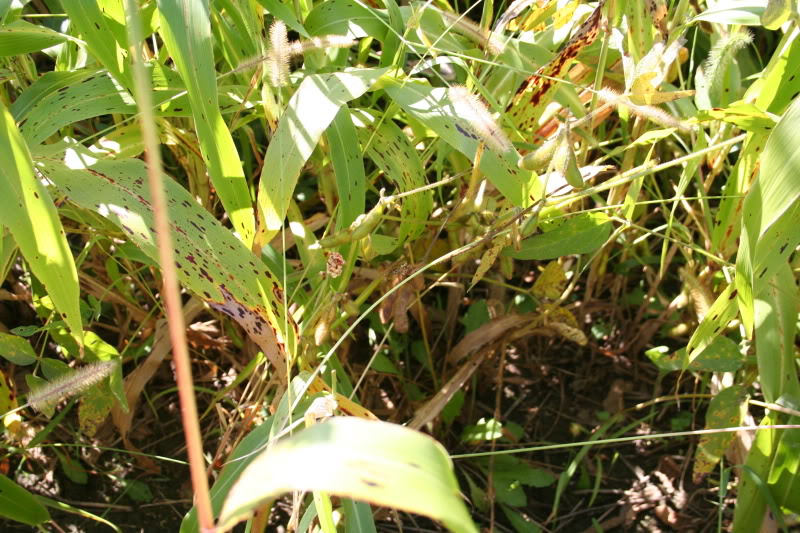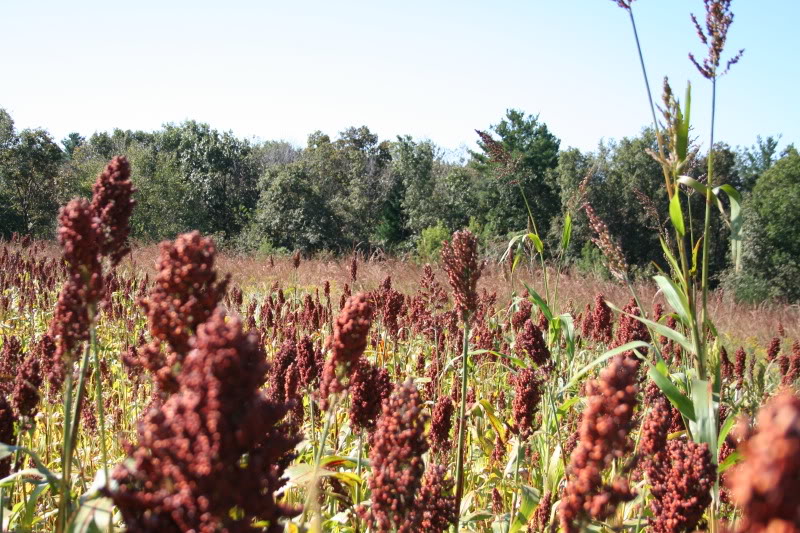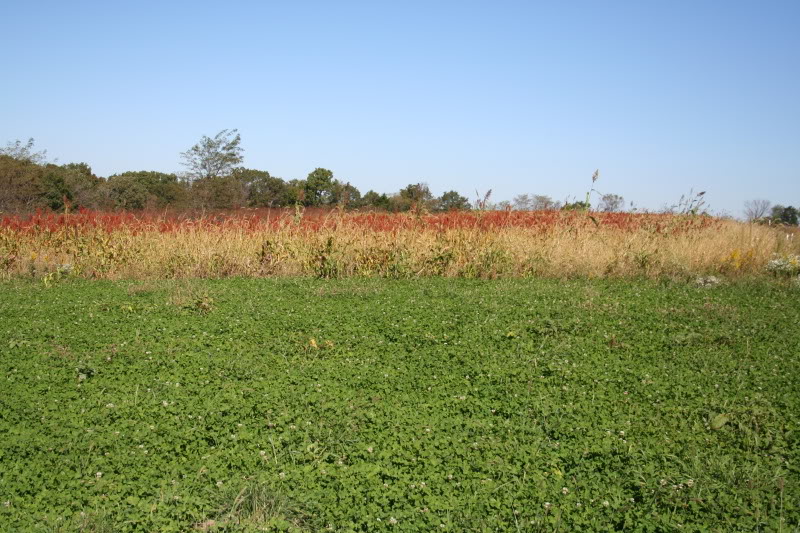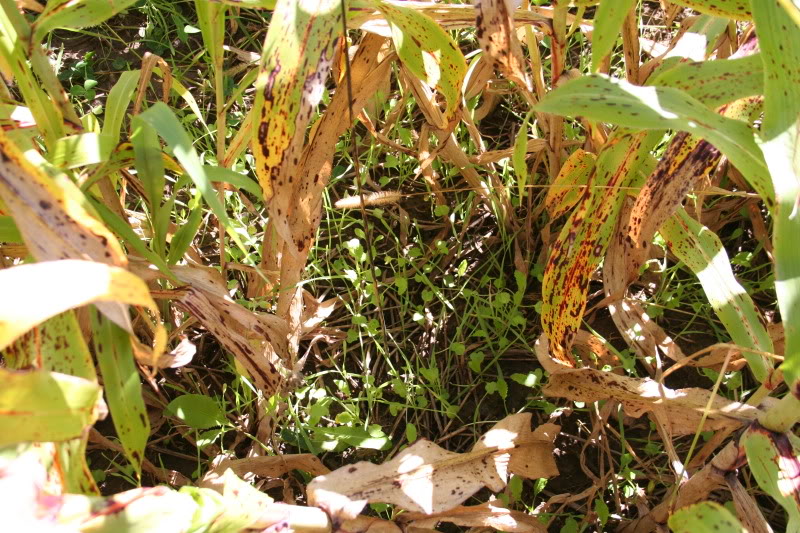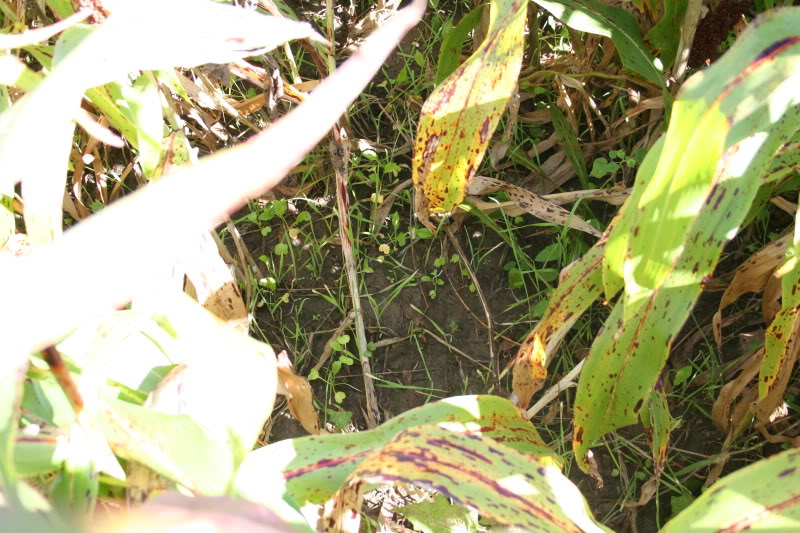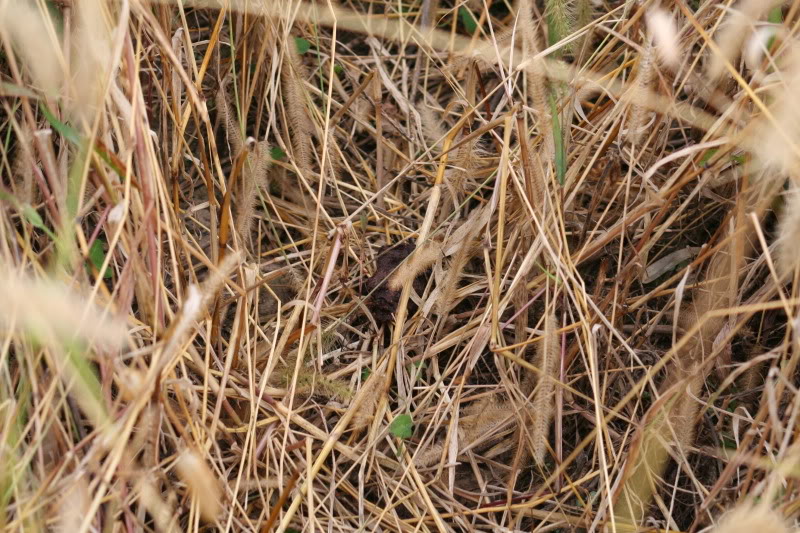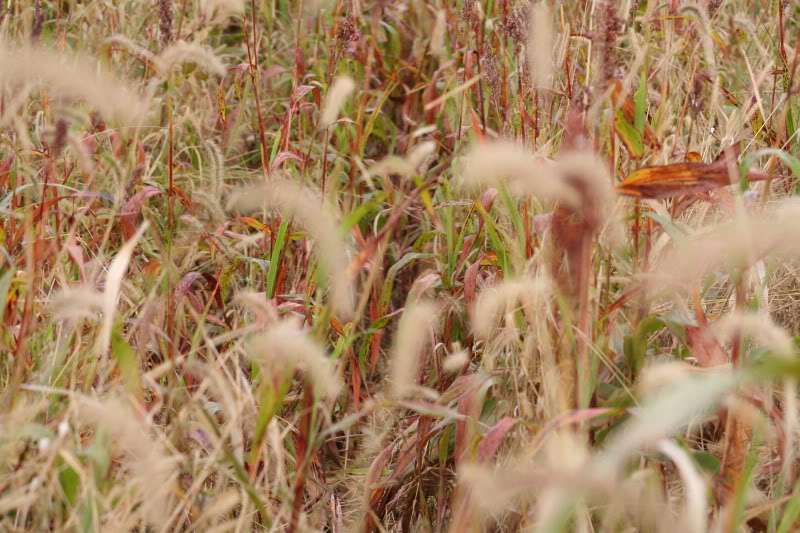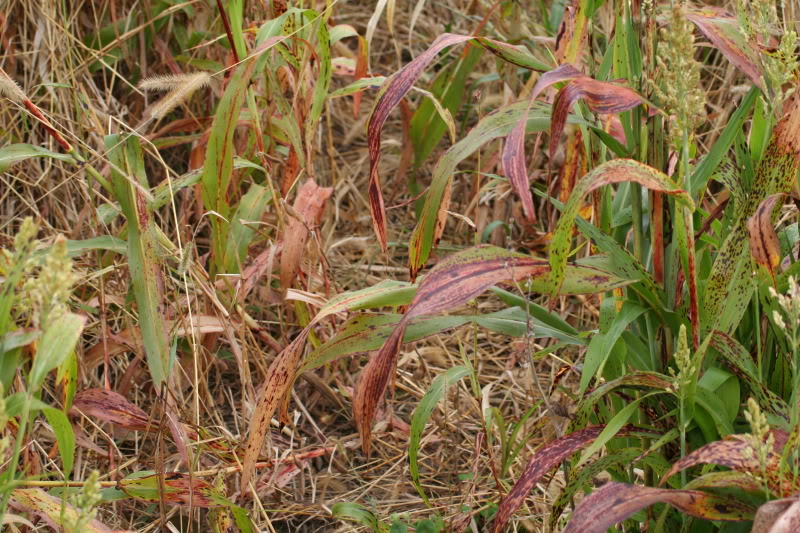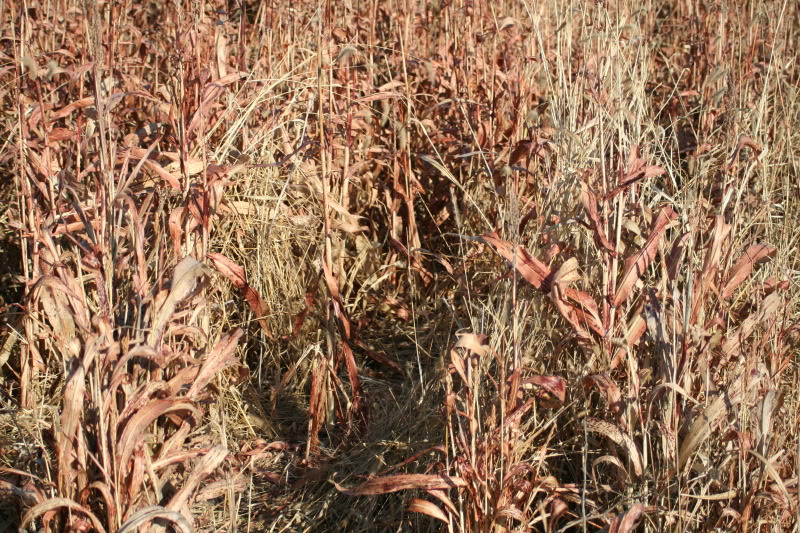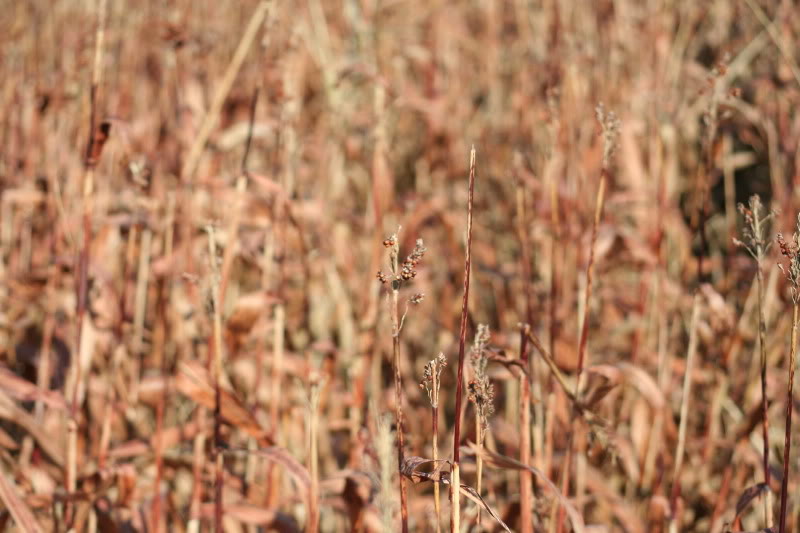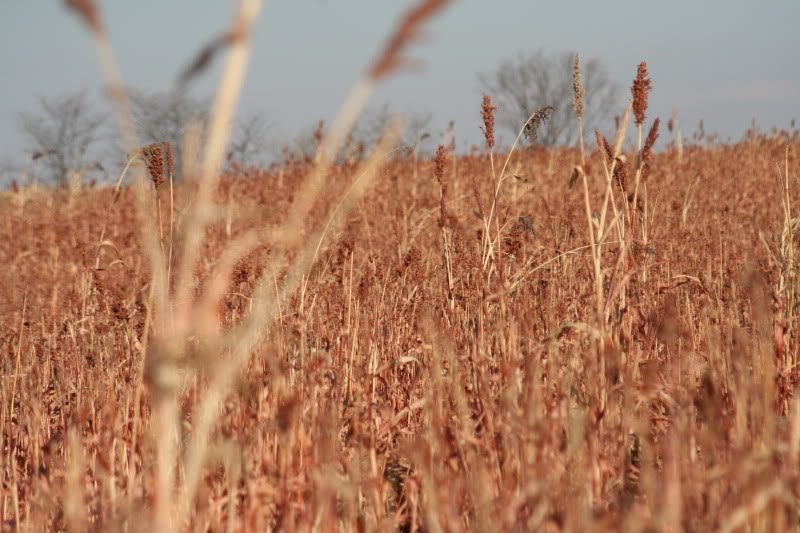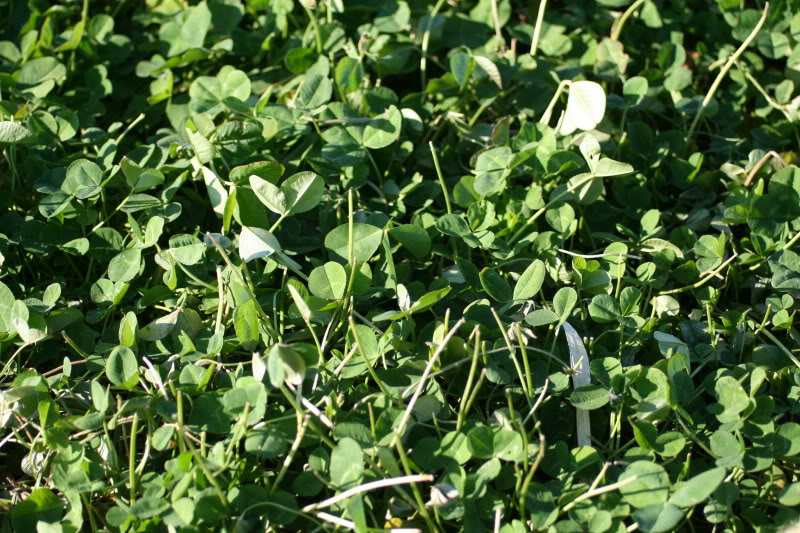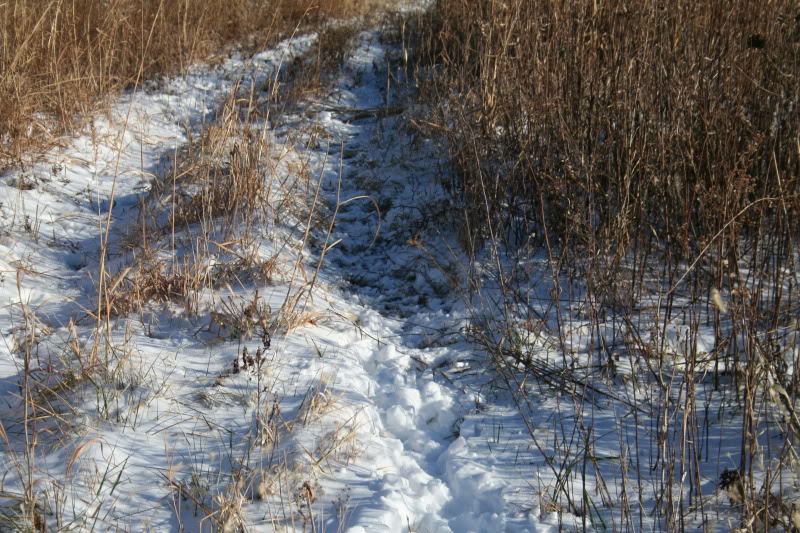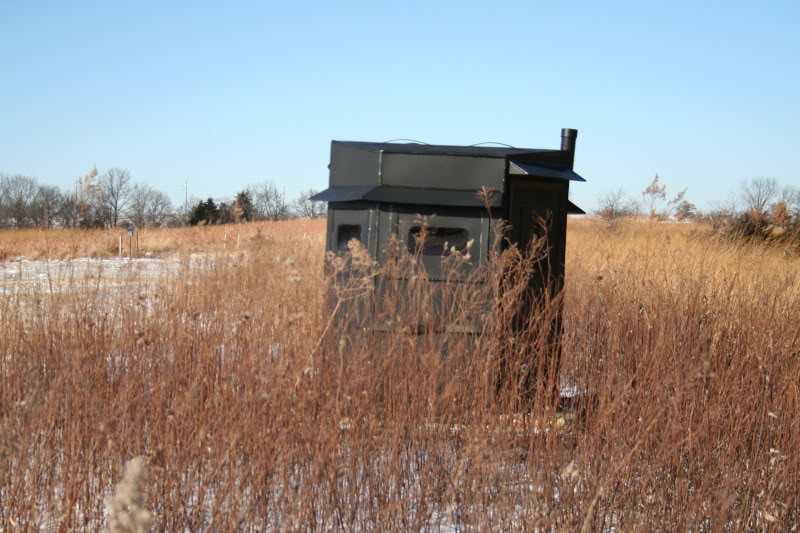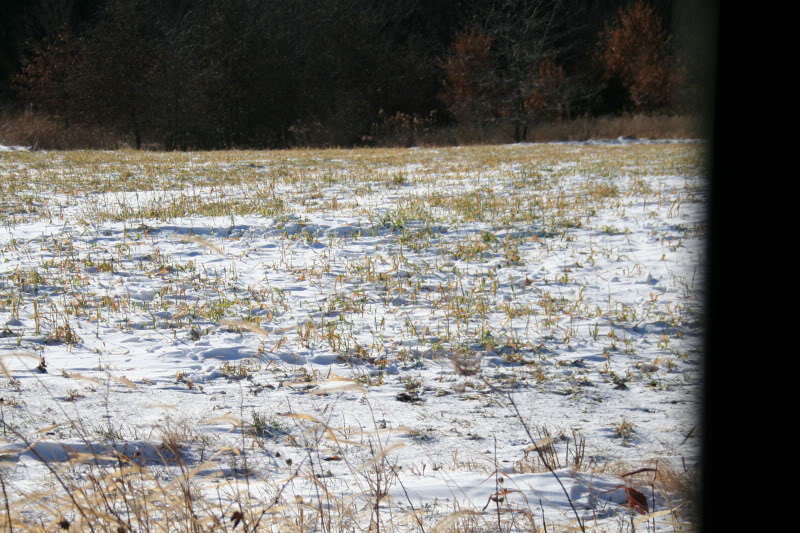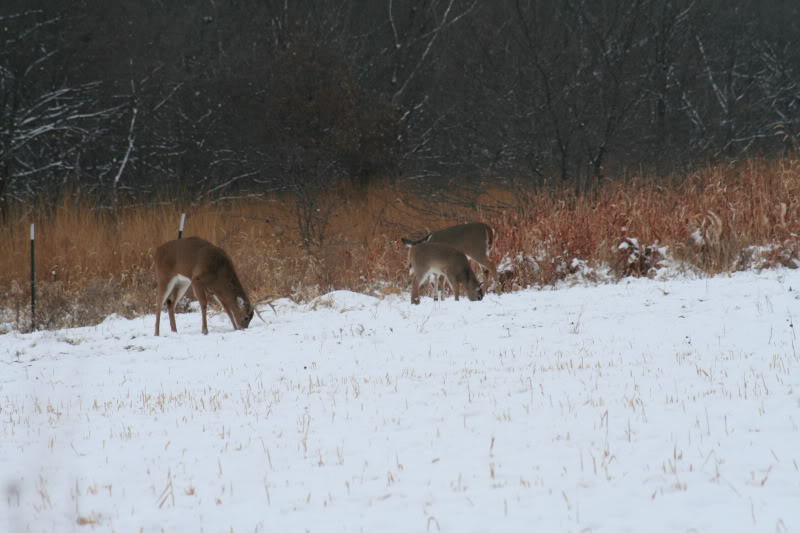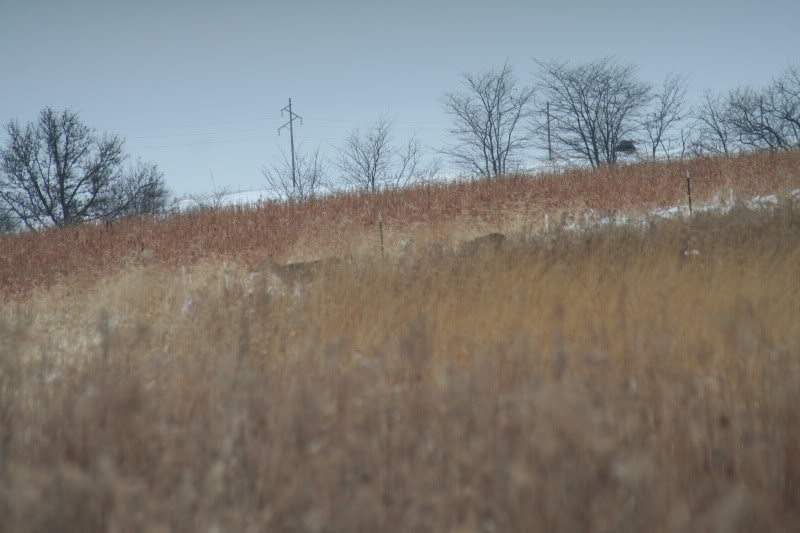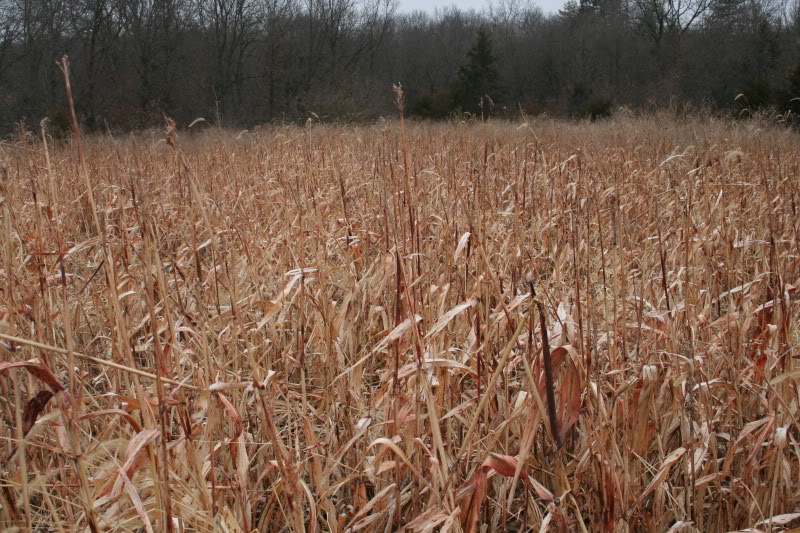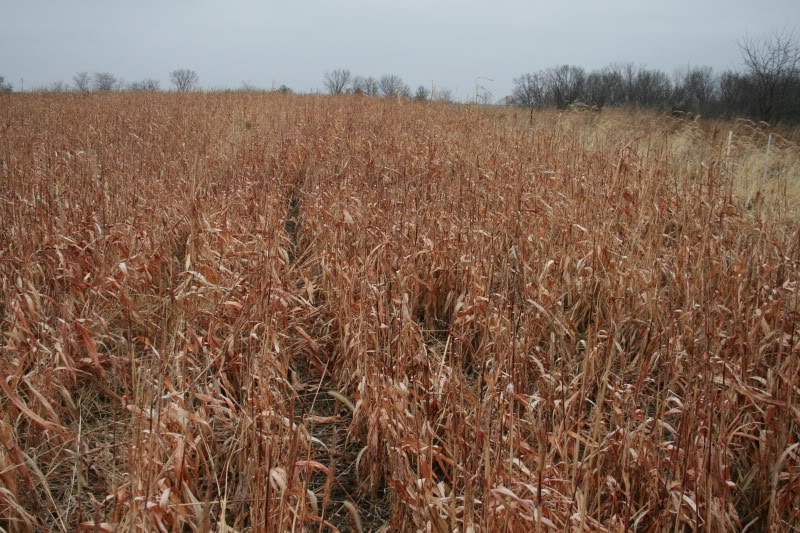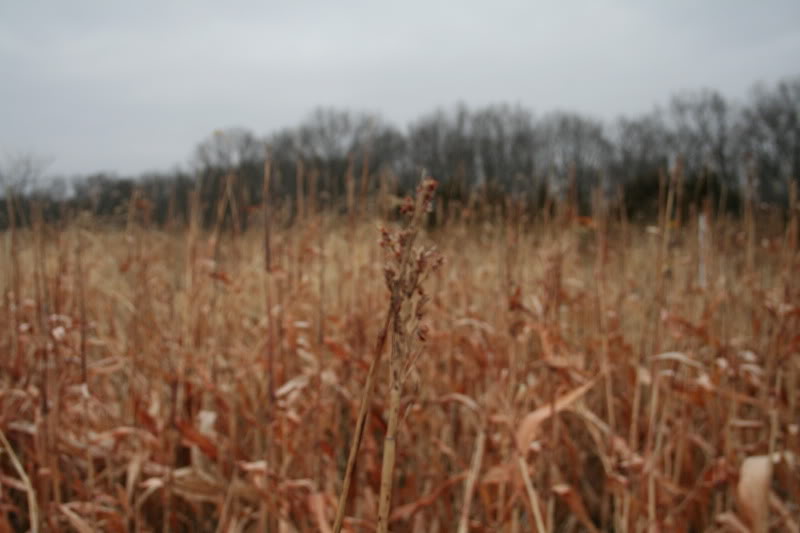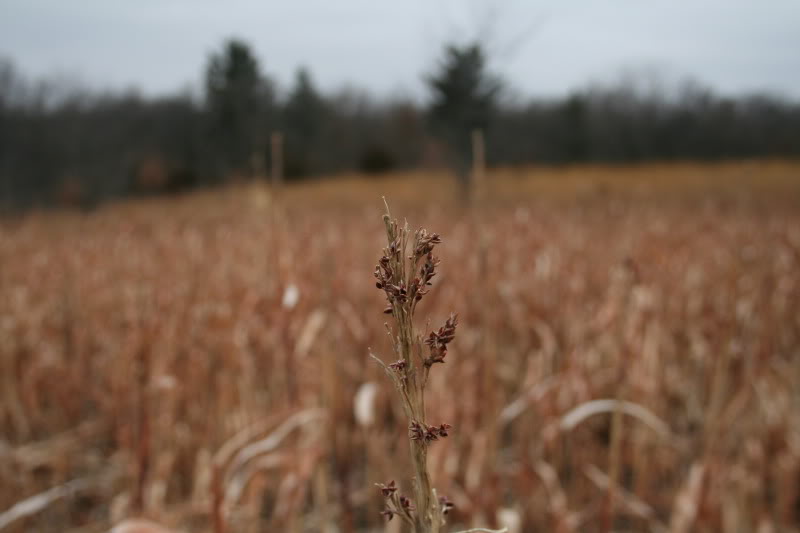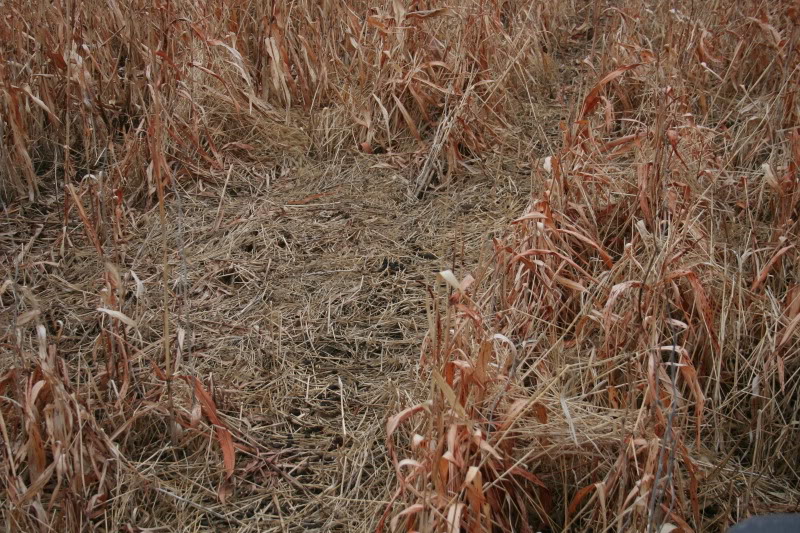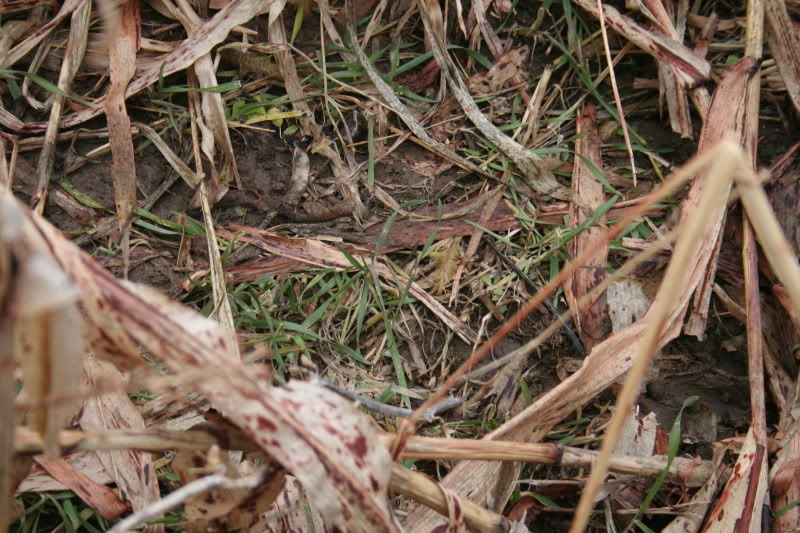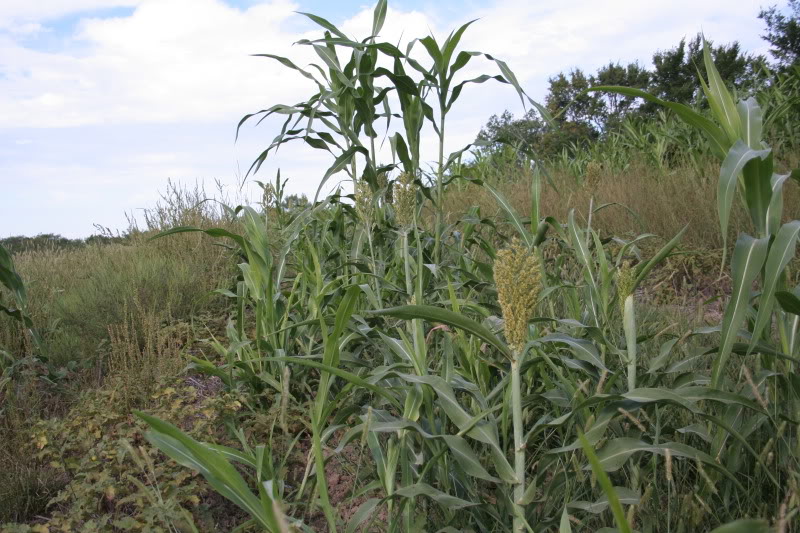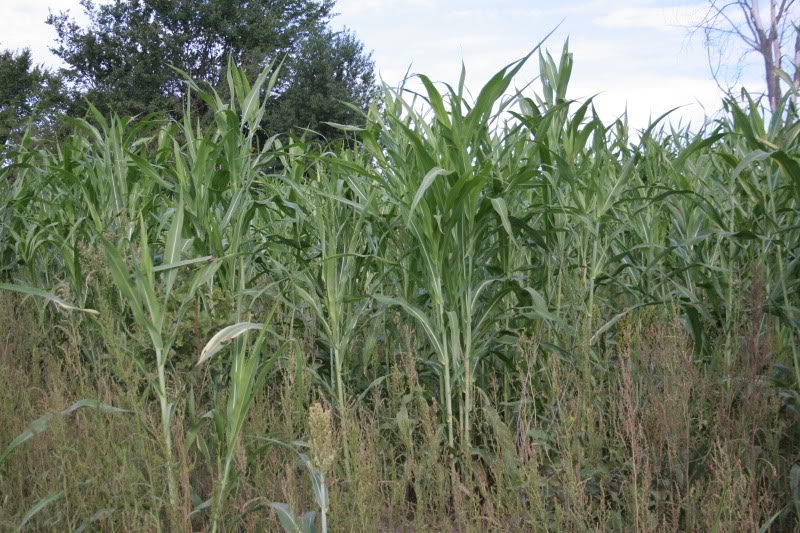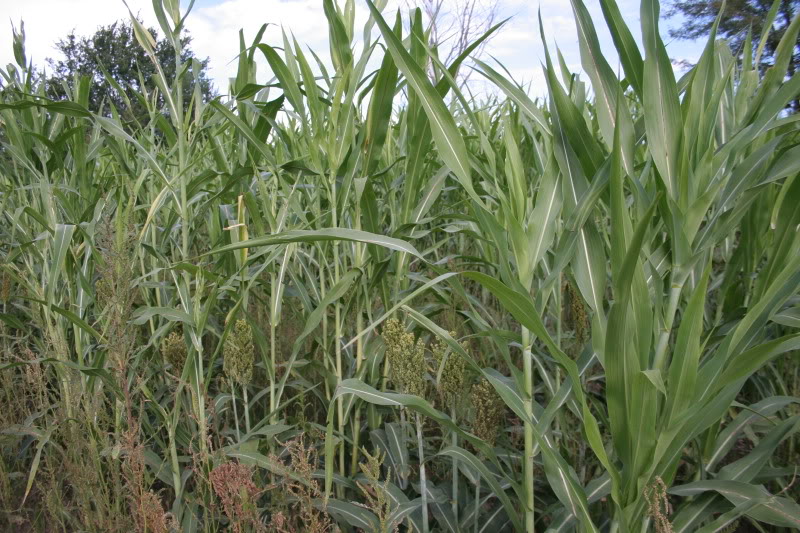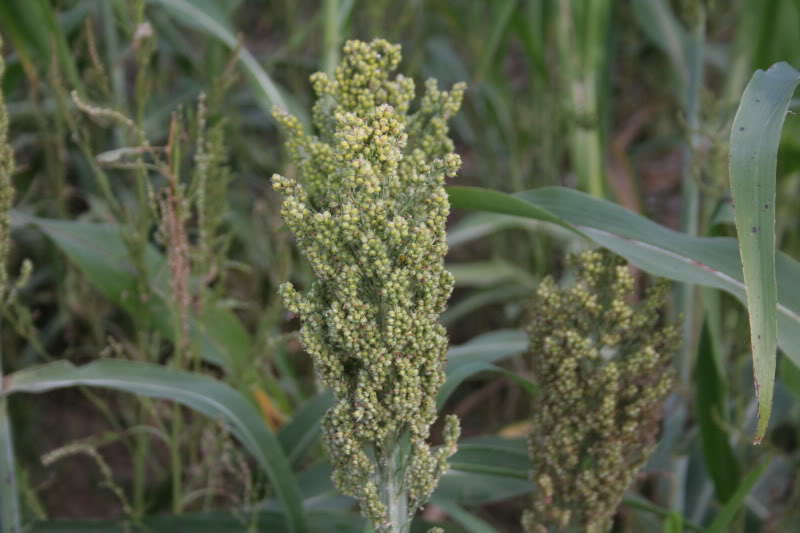September 16th, 2011
We planted a mix of both grain and forage sorghum from Pheasants Forever in between the rows of a tree planting in early July. Earlier planting was prevented due to wet weather and after planting we did not receive a drop of rain until August 30th which is interesting because we can show the significance of utilizing diversified crops that help prevent a total failure due to weather related problems.
I had planted a few rows in June but it failed due to drowning and after 4 years of wet spring/summer weather I took it for granted that 2011 would be more of the same and simply tilled in 200#'s or urea per acre, broadcasted 6-8#'s of milo seed and cultipacked to cover. Had I lightly incorporated the seed, germination would have been swift and growth more robust but because it laid on the top 1/4" of soil and received no rain...it was a tough go and much of it took weeks to germinate and in fact some did not germinate until a significant rain event n late August. I sprayed with atrazine at the maximum allowable rate which is not enough by itself to control pigweed which happily germinated while the milo was delayed although no other weeds were a problem.
Here you can see the dramatic height difference between the forage varieties and the shorter grain srghums
In no case did the pigweed have any real effect on the sorghum
and the severe drought did not have any effect on the growth of the sorghum once germinated
The short grain sorghum or milo is producing some great, highly attractive grain heads, although they are attractive to both deer and birds of all shapes and sizes!
Some high points are this...
1) Milo can be planted very late and still provide a great source of fall and winter food. Wild Game Food sorghum requires only 60 days to mature and is far less likely to suffer predation by deer then corn or beans.
2) Milo is extremely drought resistant, although less so on sandy dry soils where it should be planted earlier and slightly deeper (2" deep in sand) so this makes mile a viable option in drought prone areas or areas where wet spring weather prevents the planting of longer season crops such as corn.
3) Milo can out compete most weeds if you can provide some initial control with atrazine or simazine is used and if row planted cultivation can be used until plants are high enough to out compete weeds.
4) Like corn, sorghum provides both cover and food but if the shorter grain sorghum is used it is far less susceptible to wind damage. If high tannin milo's are planted, wildlife will not eat the grain until frosts and freezes sweeten the grain which helps insure the grain will be there during hunting season!
More information on the subject of growing milo at this link:
Growing grain sorghum
Seed sources:
Sorghum Seed
PF Blizzard Buster seed
PF Covey Rise seed
Milo loves nitrogen so plan on using 200#'s pr acre of 46-0-0 urea tilled in at planting for best results...




